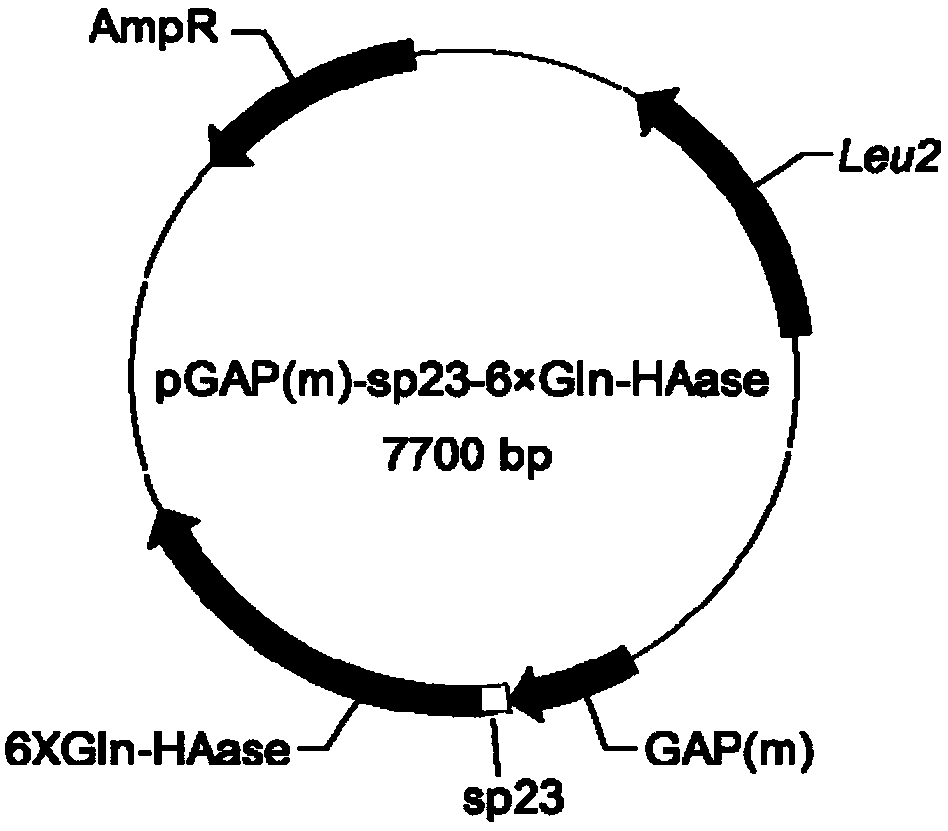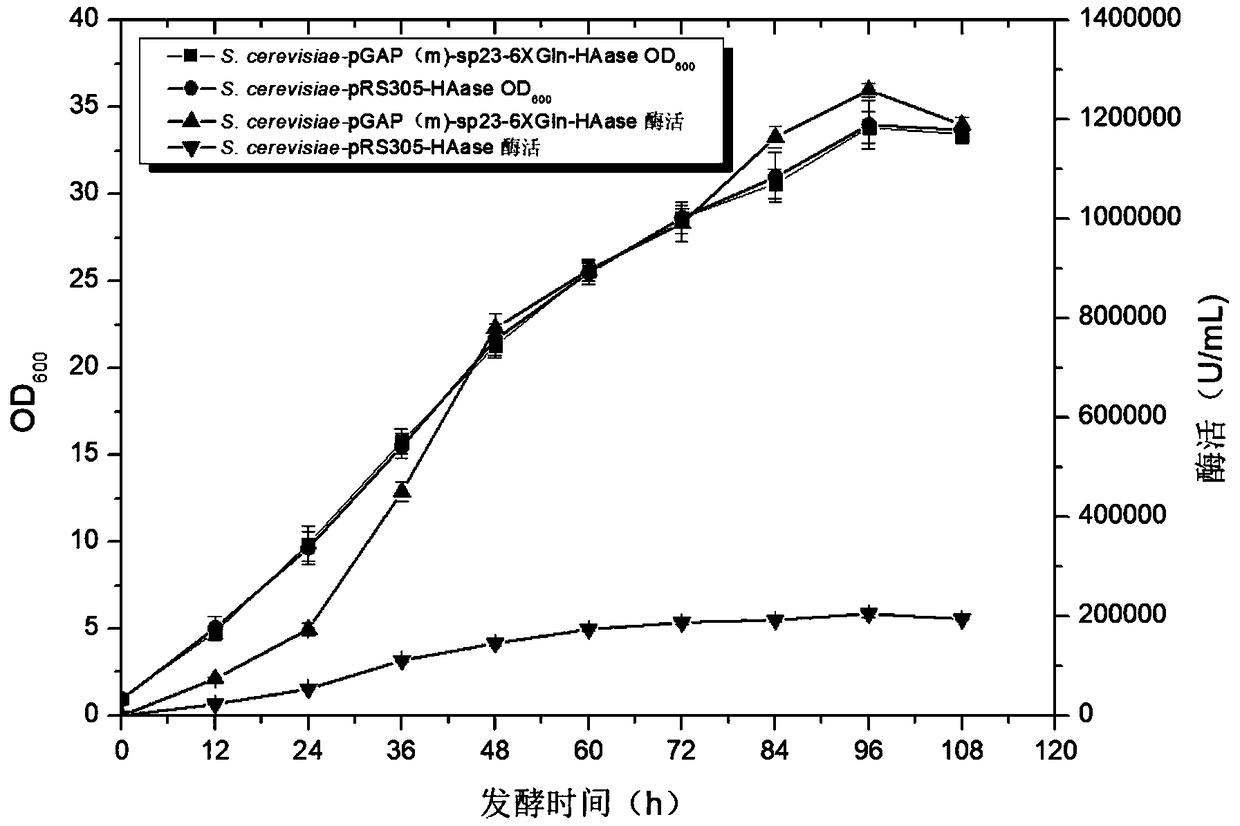Recombinant saccharomyces cerevisiae strain for secretory expression of hyaluronidase of capitella teleta
A technology of recombinant Saccharomyces cerevisiae and hyaluronic acid, applied in the field of genetic engineering, can solve the problems of animal virus infection, limited application, high cost of hyaluronan hydrolase, etc., and achieve the effect of increased enzyme activity and high selectivity
- Summary
- Abstract
- Description
- Claims
- Application Information
AI Technical Summary
Benefits of technology
Problems solved by technology
Method used
Image
Examples
Embodiment 1
[0033] Example 1: Construction of integrated expression vector pGAP(m)-sp23-6×Gln-HAase
[0034]Using the synthesized Capitella teleta hyaluronan hydrolase gene as a template, design forward primer CtHAase-F and reverse primer CtHAase-R (sequence information is shown in SEQ ID NO.4 and SEQ ID NO.5 respectively), and perform PCR Amplify. Using the pRS305 plasmid as a template, design forward primer RS305-F and reverse primer RS305-R (sequence information is shown in SEQ ID NO.6 and SEQ ID NO.7, respectively) for PCR amplification. Using the recombination cloning kit, the plasmid fragment and the hyaluronan hydrolase gene fragment were seamlessly connected in one step to obtain pRS305-HAase. Transform S.cerevisiaeCEN.PK2-1C with pRS305-HAase to obtain the recombinant strain S.cerevisiae pRS305-HAase.
[0035] Artificially synthesized promoter GAP(m), designed forward primer GAP(m)-F and reverse primer GAP(m)-R (sequence information is shown in SEQ ID NO.8 and SEQ ID NO.9 respecti
Embodiment 2
[0038] Example 2: Transformation of Saccharomyces cerevisiae with the integration vector pGAP(m)-sp23-6×Gln-HAase
[0039] The integrated vector pGAP(m)-sp23-6×Gln-HAase in Example 1 was linearized with Afl II enzyme, and the plate was streaked with Saccharomyces cerevisiae CEN.PK2-1C, and the single Inoculate the colony into a shaker flask equipped with YPD, culture for 12-16 hours, collect 1 mL of bacteria by centrifugation, discard the supernatant, add 100 μL of Transfer buffer, mix with the bacteria, add 0.5-1 μg of linearized plasmid, mix well, and store at 45°C After bathing in water for 30 minutes, the cells were spread on the corresponding amino acid-deficient SD screening plate, positive clones were selected, and the genome was extracted for PCR verification.
Embodiment 3
[0040] Example 3: Fermentation of S.cerevisiae CEN.PK2-1C-pGAP(m)-sp23-6×Gln-HAase to produce enzyme
[0041] Inoculate the correct strain S.cerevisiae CEN.PK2-1C-pGAP(m)-sp23-6×Gln-HAase by PCR and the recombinant strain S.cerevisiae pRS305-HAase into 500mL triangles containing 50mL YPD liquid medium Cultivate in a bottle at 28-32° C., 200-240 r / min for 20-24 hours to obtain seed liquid. The Saccharomyces cerevisiae seed culture solution was transferred to a 3L volume fermenter containing 1L of YPD medium at a 5-15% inoculum volume, with an aeration rate of 1-3vvm, 28-32°C, and 400-600r / min. Use ammonia water to control the pH. When the glucose concentration in the fermentation broth is lower than 4g / L, start feeding glucose to maintain the concentration at 0.5-1g / L. During the cultivation process, take samples to measure OD 600 , and the recombinant strain S.cerevisiae
[0042] The enzyme activity of the fermentation supernatant of CEN.PK2-1C-pGAP(m)-sp23-6×Gln-HAase,
PUM
 Login to view more
Login to view more Abstract
Description
Claims
Application Information
 Login to view more
Login to view more - R&D Engineer
- R&D Manager
- IP Professional
- Industry Leading Data Capabilities
- Powerful AI technology
- Patent DNA Extraction
Browse by: Latest US Patents, China's latest patents, Technical Efficacy Thesaurus, Application Domain, Technology Topic.
© 2024 PatSnap. All rights reserved.Legal|Privacy policy|Modern Slavery Act Transparency Statement|Sitemap



